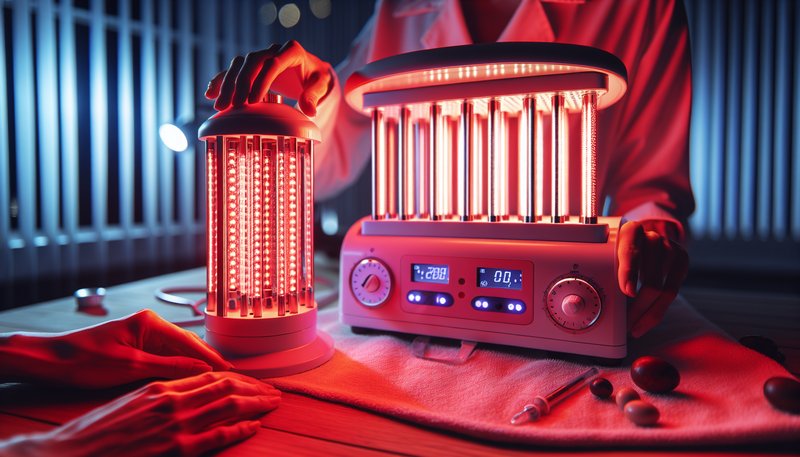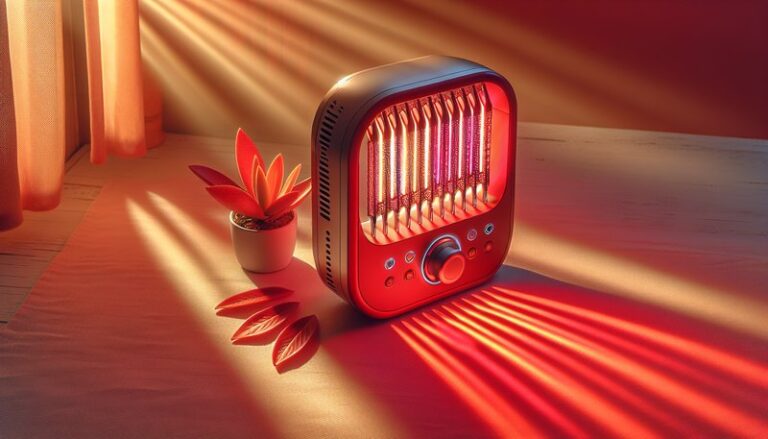How Much Is Too Much Red Light Therapy?
How Much Is Too Much Red Light Therapy?
Are you considering red light therapy for its myriad of health benefits but unsure how much is too much?
This article will explore the optimal usage of red light therapy, including its benefits, considerations for usage, alternatives, and insights into potential risks. Whether you’re a newcomer or already experienced with this therapy, understanding the limits is crucial for reaping the greatest benefits while minimizing unwanted effects.
Key Takeaways
- Red light therapy can be beneficial for various conditions, but dosages should be carefully monitored.
- Overexposure can lead to adverse effects, such as skin irritation or fatigue.
- Consulting a professional before starting any therapy is recommended to tailor treatments to individual needs.
What is Red Light Therapy?
Red light therapy (RLT) is a treatment that employs specific wavelengths of light to promote healing, reduce inflammation, and improve skin health. It typically uses low-level lasers or light-emitting diodes (LEDs) to penetrate the skin, stimulating cellular function.
Originally, RLT was applied to wound healing and pain relief, but today it has gained popularity for its diverse applications, including skin rejuvenation, hair growth, and muscle recovery. The therapy is non-invasive and touted for its safety, provided it’s used correctly.
Read all about it Proximity to Red Light Therapy
Types of Red Light Therapy
There are various forms of red light therapy, each focusing on different wavelengths:
- Near-Infrared Light Therapy: Typically used for deeper tissues, aiding in pain relief and muscle recovery.
- Mid-Red Light Therapy: Ideal for stimulating skin cells and improving complexion and texture.
- Low-Level Laser Therapy: Often used in medical settings for chronic pain and injury recovery.
Understanding which type to use is essential, as it may influence the results you experience.
What are the Benefits of Red Light Therapy?
Red light therapy offers a wide array of benefits, making it a sought-after treatment in wellness and beauty routines. Below are some of its critical advantages.
Enhanced Skin Health
RLT encourages collagen production, leading to firmer, more youthful skin. Studies suggest it can diminish wrinkles, improve skin tone, and accelerate wound healing.
Pain Relief and Muscle Recovery
Athletes increasingly employ RLT to reduce inflammation and speed up recovery after workouts. Several clinical studies indicate that it can alleviate discomfort and enhance muscle endurance.
Improved Sleep and Mood
Emerging research shows that red light therapy might help regulate circadian rhythms, contributing to better sleep quality and improved mood through its effects on melatonin production.
Additional Benefits
- Increased circulation
- Reduced inflammation
- Hair regrowth stimulation
Is it Possible to Overuse Red Light Therapy?
Yes, overuse of red light therapy is indeed possible. While it is generally considered safe, excessive exposure can lead to skin irritation, fatigue, or other unwanted side effects.
What are the Advantages of Monitoring Usage?
Maintaining a balanced approach to RLT can significantly enhance its effectiveness.
What are the Disadvantages of Overuse?
Overexposure can lead to:
- Skin burns or irritation due to excessive light exposure.
- Fatigue or headaches resulting from overstimulation.
- A decrease in overall treatment efficacy.
What are the Things to Consider Before Starting Red Light Therapy?
When considering red light therapy, several considerations can aid in optimizing results and ensuring safety.
Consultation with Health Professionals
Before beginning therapy, consult a healthcare provider or a specialist to assess individual needs and seek advice tailored to your circumstances.
Personal Skin Sensitivity
Take account of your skin’s sensitivity levels. For some, even short exposures might lead to adverse reactions, so ease into therapy gradually.
Type and Quality of Device
The effectiveness of RLT can vary widely based on the device’s quality. Ensure that you choose a reputable device that emits the correct wavelengths for your intended treatment.
Frequency of Sessions
Determine a comfortable frequency. Starting with shorter sessions, such as 10-15 minutes, a few times a week, can help gauge how your body responds.
What are the Alternatives to Red Light Therapy?
If you are apprehensive about red light therapy or wish to explore other options, various alternatives can offer similar benefits.
Blue Light Therapy
Often used for acne treatment, blue light therapy targets bacteria that cause breakouts, promoting clearer skin.
Infrared Saunas
These environments can promote detoxification, relaxation, and improved circulation, providing systemic benefits akin to those of red light therapy.
For the full story, read Best Wavelength for Red Light Therapy
Microdermabrasion
For skin rejuvenation, microdermabrasion can remove dead skin cells and improve overall complexion without the use of light therapy.
Additional Alternatives
- Chemical peels
- LED facial treatments
- Acupuncture
Conclusion: Is it Recommended to Engage in Red Light Therapy?
In conclusion, red light therapy can be a beneficial addition to your wellness regimen, provided that usage is carefully monitored. While the therapy offers numerous advantages, overuse can lead to adverse effects. It’s important to listen to your body, consult with professionals, and establish a personalized treatment plan.
Frequently Asked Questions
How long should I use red light therapy?
Most recommendations suggest 10-20 minutes per session, 3 to 5 times a week, depending on the device and specific treatment goals.
Can I do red light therapy every day?
While it is possible to use RLT daily, moderation is key. Observing how your body reacts will help you determine the optimal frequency.
Are there any side effects?
While generally safe, potential side effects include skin irritation, burning sensations, or fatigue when overused.
Can anyone use red light therapy?
Most people can safely use RLT; however, those with specific skin conditions or medical conditions should consult a healthcare provider before use.
What’s the difference between red light and infrared light therapy?
Red light therapy is primarily used for skin surface issues, while infrared light therapy penetrates deeper into tissues, often used for pain relief and muscle recovery.





